#House of Antilles
Explore tagged Tumblr posts
Text
Alderaan Seconds the Motion for a Vote of No Confidence in Chancellor Valorum

STAR WARS EPISODE I: The Phantom Menace - Deleted Scene: Bail Organa of Alderaan 00:14
And just for fun, here's an edit of the previous shot, with the bluescreen background replaced with the Senate (and a hovercam droid thrown in).

Bronze Age Star Wars (Ted) pointed out on Twitter that in the 2nd issue of the original 1977 Marvel adaptation of A New Hope, Princess Leia names her father "Bail Antilles" adding further confusion to this character's name and role. When Jimmy Smits was cast as Bail Organa in Episode II, the issue was finally laid to rest.

#Star Wars#Episode I#The Phantom Menace#deleted scene#Bail Organa of Alderaan#Coruscant#Galactic City#Galactic Senate Building#Grand Convocation Chamber#Senate Rotunda#House of Antilles#Alderaan#Senator Bail Antilles#Queen Breha Organa#Core Faction#Galactic Senate#Internal Activities Committee#senate hovercam droid
1 note
·
View note
Text






399,000 €
67 m² / 721 ft²
Saint-François, Guadeloupe, France.
#beautiful french house#beautiful apartment#apartment#flat#balcony#kitchen#bedroom#mezzanine#modern#black and white#french#island#french west indies#antilles#guadeloupe#saint-françois#france
1 note
·
View note
Text
Magic: The Gathering Tumblr RP Blogs Directory
Thought I'd try to put together a list of all the active and new MtG rp blogs out here. Let me know if there is some that need to be added to the list, going to try to get as many as I can here (this is also an excuse for people to give me more blogs to connect to). Apologies if I missed you!
Remember to check the original post for edits!
Also, we have a Discord server!
Arcavios (#arcavios posting, #strixhaven posting)
@strixhavens-best-printer
Lorehold:
@augustlorehold (planeswalker)
Quandrix:
@quandrix-biomancer
Bloomburrow (#bloomburrow posting)
@itinerant-intrepid
@three-tree-kitty
Duskmourn (#duskmourn posting)
@delirious-duskmourn-doorblade
Eldraine (#eldraine posting)
@bellira-of-tuinvale
@elk-in-eldraine
Ikoria (#ikoria posting)
@zagoth-bonder
Innistrad (#innistrad posting)
@shift-captain-seamus (planeswalker)
@monasteryofsaintatraft
@normal-innistradi
Ixalan (#ixalan posting)
@dusk-legion-diplomacy
Kamigawa (#kamigawa posting)
@azzie-beastbinder (planeswalker)
Lorwyn (#lorwyn posting)
@mirrormist-clique-adventures (planeswalker)
New Capenna (#new capenna posting)
Cabaretti:
@cabaretti-catgirl
Obscura:
@obscura-omenseeker (planeswalker)
New Phyrexia (#new phyrexia posting)
@phyrexian-hostess
Phyrexia - Original (#phyrexian posting)
@gix-yawgmoth-praetor
Ravnica (#ravnica posting)
Azorius Senate:
@azorius-eloquence
@first-interplanar-bank (planeswalker)
Boros Legion:
@shift-captain-seamus (planeswalker)
Cult of Rakdos:
@ask-khali-lineslinger
@bitchy-rakdos-enchanter
@rakdos-outlaw
Golgari Swarm:
@golgari-sewerposter
@kraul-likes-detritus
@lotleth-centenarian-2
@lotleth-spore-farmer
Gruul Clans:
@relentless-gruul-siegeseer (this is me!)
House Dimir:
@average-ravnican (planeswalker)
@dimir-archivist
@duskmantle-diviner
@house-dimir-official
@hyde-the-toad-bard
Izzet League:
@avishkari-izzet
@izzet-gobbo
@kraz-and-burn
@nikos-peleren-izzet
Orzhov Syndicate:
@demon-of-vizkopa
@titheabsolution
Selesnya Conclave:
@conclavecreator
Simic Combine:
@antiling-but-simic
@biomancy-blues
@combinecutie
Guildless:
@underthegates
164 notes
·
View notes
Text
Cuba demands its right to happiness








More than 500,000 people flooded Havana's Malecon last Friday to send, as a message across the ocean, a claim to the U.S. government against the blockade and the permanence of Cuba on the list of alleged state sponsors of terrorism.
The first secretary of the Central Committee of the Communist Party of Cuba and President of the Republic, Miguel Díaz-Canel Bermúdez, condemned U.S. President Joe Biden for continuing the hostility of his predecessor, Donald Trump, who will return to the White House in January.
He highlighted the arrogance to keep the Island on the aforementioned list, a doubly immoral accusation, since it comes from an administration that promotes violent actions against the largest of the Antilles and has become an asylum for the members of that machinery of hatred.
136 notes
·
View notes
Note
Your black widow ID made me realize that was the exact spider that crawled out of my drain while I was doing dishes.
DRAIN SPIDER!!!
In my family, I'm the one who removes spiders from the house (alive).
Here's a really gorgeous Black Widow for you...
South American Black Widow (Latrodectus curacaviensis), family Theridiidae, found in the Lesser Antilles of the Caribbean and South America

photograph by Renato Brito

photograph by Robin James
218 notes
·
View notes
Text

-Landscape with House in the Woods in Saint Thomas, Antilles-
43 notes
·
View notes
Text
Okey, when I started watch «House of the Dragon» l know what Rhaenyra and Aegon bought dead in the end, after them will be two scarred and broken children and that will be stated of Targaryens end. I choose Rhaenyra's side. I choose her, choose my one true Queen «antill death or end of story» and no matter what I already know how it ends. But honestly I don't care about Blacks or Greens. I am absolutely Daemyra team. On screen or in books Daemon and Rhaenyra are powerful couple. They always were. She was the queen and he was the king. Their little children will be kings. You never lose this war if you chose them. Not colour.
In the end, it's my opinion and my blog.
#daemon targaryen#rhaenyra targaryen#daemon x rhaenyra#daemyra#daemyra team#hotd#house of the dragon
14 notes
·
View notes
Note
ik i said furry au but honestly i was thinking just straight up critters
i went for mostly canines because that's what i know about lol but i like your non-canine interpretations!
if i'm going a bit more out there wilson is a phiddipus johnsoni jumping spider. i like jumping spiders. they've got personality. they waggle their arms at you. phiddipus johnsoni has teal arms and a red booty but it's not dangerous and jumping spiders on the whole tend to be friendly to people. house would be a noble false widow- looks like a brown widow but is not nearly as dangerous (not pleasant but apart from bacteria risk, not going to kill you, kinda like a bee or a wasp sting if you're not allergic), because he actually is a decent person underneath all the cruel bastard facade. chase is a peacock spider! they're a type of jumping spider like phiddipus johnsoni but they're of a different genus (they're maratus volans) and they're really funky looking and they dance and they're australian. i think all of those are chase. thirteen is a striped lynx spider- they're similar to her in coloration and they've got spiky pedipalps on their legs! they look fearsome but to humans they pose little threat (the bite hurts but you'll be fine). foreman is some form of spider in the family trachelidae. they're kinda normal and if they bite you it'll hurt but nothing will happen and some of them have dapper markings just like foreman. cameron is an antilles pinktoe tarantula. really pretty. they're known to be shy but they also can throw their hair at you if they want to. so watch out. taub is a micropholcus fauroti (daddy long legs) because i think it's funny to have a him be a long-legged spider. cuddy is a black widow because i would be scared of her if i knew her in real life but she is so gorgeous. aaaaaand masters is a joro spider. they're very beautiful (vibrant blue and yellow bodies with black and orange legs) and very large (about palm-sized) but not dangerous and they're very docile.
i like bugs
-🎸
there are bugs indeed
6 notes
·
View notes
Text

Biala with brush in hand, Antiles, France, 1934. Photo: Ford Madox Ford
Biala (b. 1903, Biala, Poland; d. September 24, 2000, Paris, France) was a Polish-born American painter known in Paris and New York for her sublime assimilation of the School of Paris and the New York School of Abstract Expressionism. During her eight-decade career, her work was characterized by a modernist reinterpretation of classical themes of landscapes, still-life, and portraiture, animated gesturally with punctuated brush work held fast by her keen eye for observation.
As an immigrant arriving from a Russian-occupied Poland to a Jewish tenement house on the Lower East Side in New York in 1913, Biala, then Janice Tworkov, faced a new culture and adolescence at the same time.

Janice Biala (Sept 11, 1903 – Sept 24, 2000) was a Polish-born American artist whose work, spanning seven decades, is well regarded both in France and the United States. Her work lies between figuration and abstraction. A modernist, she transformed her subjects into shape and color using "unexpected color relationships and a relaxed approach to interpreting realism." Via Wikipedia
#Janice Biala#biała#sztuka kobiet#art#polish art#polish women artists#malarka#Polish-born American artist#Polish-born
3 notes
·
View notes
Text
#I almost put clint x natasha on here but I didn’t because it is actually a thing in the comics and in some of the cartoons#they were a thing in the avengers cartoon I grew up on and child me was SO confused when they didn’t end up together lol#polls#Felix and Bernie I do actually ship but with the knowledge that they’re relationship probably isn’t actually all that healthy. they are#just hilarious and cute and they compel me lol#also for the record I do ship romione. I just can’t help but think about the fred x Hermione potential sometimes
39 notes
·
View notes
Text

Way of death
Still, the emphasis on debt is puzzling, since nothing in the ethnography suggests that in the 1950s debt was a pervasive concern of everyday Tiv life. Here I think we have to turn to a larger historical context.
The early history of the Tiv is difficult to reconstruct, but they appear to have arrived in the Benue River valley and adjacent lands sometime around 1750 – that is, during a time when all of what’s now Nigeria was being torn apart by the Atlantic slave trade. Early stories told how the Tiv, during their migrations, used to paint their wives and children with simulated smallpox scars, so that potential raiders would be afraid to carry them off. They established themselves in a notoriously inaccessible stretch of country, and offered up ferocious defence against periodic raids from neighbours to their north and west (Abraham 1933: 17–26; Akiga Sai 1954; Bohannan 1954). Some of these raids were not entirely unsuccessful. It’s probably not insignificant that the nearby Jukun kingdom, which made a series of ultimately unsuccessful attempts to conquer the Tiv in the 18th century, disposing many Tiv captives to slave-dealers on the coast in the process, was also seen, in later times, as the real origin of the ‘organisation’ of the mbatsav (Abraham 1933: 19, 31–5; Curtin 1969: 255, 298; Latham 1973: 29; Tambo 1976: 201–3).
One might also consider the actual origin of the famous copper bars used as social currency.
Copper bars had been used for money in this part of Africa for centuries; often, it seemed, they were used not just for social purposes but broken up into small change for use in ordinary commercial transactions (Jones 1958; Latham 1971; Northrup 1978: 157–64; Herbert 2003: 196). Ibn Battuta saw people using copper bars to buy everyday wares in marketplaces in the nearby Niger region as far back as the 1340s. Most of the bars current in 18th- and 19th-century Tivland, on the other hand, were not local products. They were mass-produced in factories in Birmingham, and imported through the port of Old Calabar at the mouth of the Cross River, by slave-traders based in Liverpool and Bristol. The Tiv were unusual in restricting these bars to social purposes. In all the country adjoining the Cross River – that is, in the region directly to the south of the Tiv territory – they were still used as everyday currency.
It is hardly surprising that Tiv were suspicious of such items. Almost everywhere else, they were also the currency of the slave. During the 1760s alone, perhaps 100,000 Africans were shipped down the Cross River to Calabar and nearby ports, where they were put in chains, placed on British, French or other European ships, and shipped across the Atlantic – part of perhaps 1.5 million exported from the Bight of Biafra during the whole period of the trade (Eltis et al. 2000; Lovejoy and Richardson 1999: 337). Some had been captured in wars, raids or simply kidnapped. The majority, though, were carried off because of debts.
In fact the Atlantic Slave Trade as a whole was a gigantic network of credit arrangements. Ship-owners based in Liverpool or Bristol would acquire goods on easy credit terms from local wholesalers, expecting to make good by selling slaves (also on credit) to planters in the Antilles and America, with commission agents in the city of London ultimately financing the affair through the profits of the sugar and tobacco trade (Sheridan 1958; Price 1980, 1989, 1991). Ship-owners would then ship their wares to African ports like Old Calabar. Calabar was the quintessential mercantile city-state, dominated by an African elite who dressed in European clothes, built themselves European-style houses, and in some cases even sent their children to England to be educated.
On arrival, European merchants would negotiate the value of their cargoes in the copper rods that served as the currency of the port. The cargoes themselves consisted of cloth, iron and copper ware, incidental goods like beads, and substantial numbers of firearms. The goods were then advanced to Calabar’s merchant elite, again on credit, who assigned them to their own agents to move upstream.
The obvious problem was how to secure the debt. The trade was an extraordinarily duplicitous and brutal business, and merchants who often doubled in the interior as no more than raiders and kidnappers were also notoriously bad credit risks. As a result, a system quickly developed where European captains would demand security in the form of pawns.
It would seem that, with the development of commercial towns on the West African coast, institutions that must have originally resembled Lele pawnship, or Tiv wards, had gradually transformed into what was effectively a form of debt peonage. We don’t know precisely how it happened, but the process was clearly well under way even before Europeans appeared on the scene in the 16th century. Debtors would pledge a family member as surety for a loan; the pawn would then become a dependent in the creditor’s household, working his fields or tending to his household chores – their persons acting as security and their labour, effectively, substituting for interest. Still, there are clear signs of a historic connection: for instance, if a girl was pledged, the creditor generally had the option of marrying her when she reached maturity, thus cancelling the debt, exactly as among the Lele. And critically, pawns were clearly distinguished from slaves. The difference only became blurred once it became the custom for the masters of slaving ships, on advancing goods to their African counterparts, to demand pawns – for instance, two of the merchants’ own dependents for every three slaves to be delivered, preferably, including at least one or two members of the merchants’ families (Lovejoy and Richardson 1999: 349–51; 2001). This was in practice not much different than demanding the surrender of hostages, and at times created major political crises if captains, tired of waiting for delayed shipments, decided to take off with a cargo of pawns instead.
Upriver, debt pawns also played a major part in the trade. In the Cross River region, this trade seems to have had two phases. The first was one of absolute terror and utter chaos, in which raids were frequent, and anyone travelling alone risked being kidnapped by roving gangs of thugs and sold to Calabar. Villages lay abandoned; many fled into the forest; men would have to form armed parties to work the fields (Equiano 1789: 6–13). This period was relatively brief. The second began when representatives of local merchant societies began establishing themselves in communities up and down the region, offering to restore order. The most famous of these was the Aro Confederacy, who, calling themselves ‘Children of God’, and backed by heavily armed mercenaries and the prestige of their famous Oracle at Arochukwu, created their own justice system, with the Oracle acting as a kind of regional court of high appeal (see Jones 1939; Ottenberg 1958; Afigbo 1971; Ekejiuba 1972; Isichei 1976; Northrup 1978; Dike and Ekejiuba 1990; Nwauwa 1991). This system was notoriously harsh, and itself seems to have functioned above all to either reduce as many villagers as possible into slavery by judicial means, or to assign penalties (always denominated in brass rods) so hefty that culprits would be forced to sell themselves or members of their families into slavery.
These same merchant societies also assisted in the dissemination of a secret society called Ekpe, most famous for sponsoring magnificent masquerades and for initiating its members into arcane mysteries, but that also acted as a covert mechanism for the enforcement of debts. In Calabar itself, the Ekpe society operated primarily as a means of enforcing contracts and collecting debts (Latham 1973: 38). But it was open to anyone willing to pay the hefty initiation fees – which were also exacted in the brass rods the merchants themselves supplied. In the town the fee schedule for each grade looked like this (from Walker 1875: 120):

In town, membership became the chief mark of honour and distinction. Entry fees were no doubt less exorbitant in small, distant communities, but the effect was the same: thousands ended up in debt to the merchants, whether for the fees required for joining, or for the trade goods they supplied (mostly cloth and metal put to use creating the equipment and costumes for the Ekpe performances), debts that they thus themselves became responsible for enforcing on themselves. These debts, too, were regularly paid in people, ostensibly, yielded up as pawns. But in these cases the line between pawns and slaves soon became effectively non-existent.
In the countryside, practices varied. In many areas, copper rods became general purpose money. In the Afikpo district (Ottenberg and Ottenberg 1962: 124), on a remote part of upper Cross River, we learn that copper bars, supplied by the merchant societies, were not used to buy food but restricted to social purposes, ‘for gifts and for payments in funerals, titles, and other ceremonies’. Most of those payments, titles and ceremonies however were tied to the secret societies that the merchants themselves had brought to the area:
In the old days, if anybody got into trouble or debt in the upper parts of the Cross River, and wanted ready money, he used generally to ‘pledge’ one or more of his children, or some other members of his family or household, to one of the Akunakuna traders who paid periodical visits to his village. Or he would make a raid on some neighboring village, seize a child, and sell him or her to the same willing purchaser. (Partridge 1905: 72)
The passage only makes sense if one recognises that debtors were also, owing to their membership in the secret societies, also the debt collectors. The seizing of a child can only be a reference to the local practice of ‘panyarring’, current throughout West Africa, by which creditors despairing of repayment would simply sweep into the debtor’s community with a group of armed men and seize anything – people, goods, domestic animals – that could be easily carried off, then hold it hostage as security. It was actually a quite sensible expedient in an environment with no central authority, where people tended to feel an enormous sense of responsibility towards other members of their community, and very little responsibility towards anyone else. In the case cited above, the debtor would, presumably, be calling in his own debts – real or imagined – to those outside the organisation, in order not to have to send members of his own family.
Such expedients were not always effective. Often debtors would be forced to pawn more and more of their own children or dependents, until finally, there was no recourse but to pawn themselves (Harris 1972: 128). And of course, at the height of the slave trade, ‘pawning’ had become little more than a euphemism. The distinction between pawns and slaves had largely disappeared. Debtors, like their families before them, ended up turned over to the Aro, then to the British, and finally, shackled and chained, crowded into tiny slaving vessels, and sent off to be sold in plantations across the sea.
∗
If the Tiv, then, were haunted by the vision of an insidious secret organisation that lured unsuspecting victims into debt traps, whereby they themselves became the enforcers of debts to be paid with the bodies of their children, and ultimately, themselves – one reason was because this was, literally, happening to people who lived no more than a few hundred miles away. Nor is the use of the phrase ‘flesh debt’ especially inappropriate. Slave-traders might not have been reducing their victims to meat, but they were certainly reducing them to nothing more than bodies.
What was remarkable that all this was done, the bodies extracted, through the very mechanisms of the human economy, premised on the principle that human lives are the ultimate values, to which nothing could possibly compare. Instead, all the same institutions – fees for initiations, means of calculating guilt and compensation, social currencies, debt pawnship – were turned into their opposite; the machinery was, as it were, thrown into reverse; and, as the Tiv also perceived, the very gears and mechanisms designed for the creation of human beings collapsed on itself, and became the means for their destruction.
As the above examples reveal, the change could only be effected by violence – in the case of the Atlantic slave trade, what is almost certainly the greatest and most catastrophic outbreaks of commercial violence in the history of the world. Yet at the same time, I think the very intensity of the catastrophe can help lay bare some of the mechanisms by which human economies could have, in many other times and places in human history, overcome the conceptual barriers between social currencies, as tokens of a debt that cannot be paid, and commercial currencies, as means of cancelling debts in their entirety. One thing is clear: the change was effected by violence. Above all, it was only violence that could rip a human being entirely from the web of unique human relations that thereby made her a unique individual, a daughter, sister, wife, lover, friend, so as to make her the exact equivalent of anyone else. But of course, this violence was already present even when lives could only be equivalent to other lives. Among the Lele, men could not be compelled to do anything they did not agree to do, but women could still be beaten if they completely refused to comply with the system that rendered them exchangeable. Among the Tiv, Akiga Sai is even more explicit:
Under the old system an elder who had a ward could always marry a young girl, however senile he might be, even if he were a leper with no hands or feet; no girl would dare to refuse him. If another man were attracted by his ward he would take his own and give her to the old man by force, in order to make an exchange. The girl had to go with the old man, sorrowfully carrying his goat-skin bag. If she ran back to her home her owner caught her and beat her, then bound her and brought her back to the elder. The old man was pleased, and grinned till he showed his blackened molars. ‘Wherever you go,’ he told her, ‘you will be brought back here to me; so stop worrying, and settle down as my wife.’ The girl fretted, till she wished the earth might swallow her. Some women even stabbed themselves to death when they were given to an old man against their will; but in spite of all, the Tiv did not care. (1939: 161)
Anthropologists have spent much of the 20th century studying kinship systems, often creating elaborate and elegant diagrams to understand what Le´vi-Strauss so famously called ‘the exchange of women’ (1949). It was only after feminist authors like Gayle Rubin (1975) began to point out just how coercive such systems ultimately are, how much violence lay beneath them, that anthropologists suddenly seem to have concluded that the entire subject was no longer particularly interesting. Yet it would appear that it is precisely through elaborating on this underlying violence, through the transformation of pawns into peons, for example, that systems of debt could begin to take what we would now consider commercial form: that is, as a series of quantifiable, fully exchangeable equivalents, and that social currencies could become money in the familiar sense of the term.
#Africa#anthropology#debt#economics#money#violence#african politics#african economics#anarchism#anarchy#anarchist society#practical anarchy#practical anarchism#resistance#autonomy#revolution#communism#anti capitalist#anti capitalism#late stage capitalism#daily posts#libraries#leftism#social issues#anarchy works#anarchist library#survival#freedom
3 notes
·
View notes
Text
OC Introduction - Isla Tinero-Antilles

MAY THE FOURTH BE WITH YOU, DAY ONE: I'm One with the Force, and the Force is with Me
Taking to the skies to fly into battle with resistance fighters, wielding a lightsaber to avenge a friend that been harmed, or breaking an oath to protect those who can't protect themselves; May fourth is a day to honor the light side characters who can and cannot utilize the Force. Highlight their journey(s), their role(s) in the grand scheme of things, the impact(s) they've created on themselves and everyone around them, etc.
Born in 6BBY to Wedge Antilles and Mala Tinero, Isla's life was marred by tragedy from a young age when her mother, maternal grandfather, and several other relatives were killed by the Empire, Isla herself only surviving because Mala managed to hide her in an underground safe house. Nonetheless it was still twelve hours before anyone found her as they had to dig through the rubble to get to her, - this incident served as the final catalyst for Wedge to join the Rebellion, taking his daughter with him, though for her own safety she ended up smuggled to an Outer Rim world while he fought for the Alliance.
As a result, Isla didn't see much of her father, but she supported the Rebellion and was always frustrated that she couldn't do more to help, though she was determined that once she became a teenager she would find a way to help. But thankfully the main fighting ended before this and Isla rejoiced when the second Death Star was destroyed and the Emperor killed and she was able to reunite with her dad, and after the treaty was signed, she and Wedge settled on Hosnian Prime, and she was able to enjoy peace for the first time in her life. But she was still unsettled, the Corellian wanderlust still very much present, and she wanted to go out and explore the galaxy any way she could - eventually, years later, following in her father's footsteps and becoming a pilot, though she had no plans to become a fighter, instead just wanting to see the universe for herself.
This all changed when the First Order started making waves - although the New Republic didn't consider them a threat, Isla knew this could escalate, and signed up to join the Defense Fleet. A few years later tragedy struck her life again when Ben Solo turned Dark and slaughtered most of Luke Skywalker's Jedi students, and Mara, Nellith, and Reyana - people Isla knew and loved, people she considered family - were apparently killed as well. It was clear that the First Order was far more dangerous than anyone had realised and Isla - incensed at the lack of action from the New Republic - became part of the Resistance alongside her stepbrother Temmin Wexley, and by 34BBY holds the rank of Commander, having led multiple missions against the rising tyranny in the galaxy.
But the biggest threat is yet to come - and it won't be long before Isla comes face to face with the ghosts of her past...
Tagging (let me know if you want to be added or removed): @shrinkthisviolet @starstruckpurpledragon @daughter-of-melpomene
6 notes
·
View notes
Note
What animals do you have all in all?
A 5ft leucitic ball python, two Mediterranean house geckos I caught at the place I work, 13(?) blue feigning death beetles, an Asian forest scorpion, a Brazilian jewel, an Antilles pinktoe, a Brazilian black, a Trinidad dwarf, a pink zebra, Chilean flame, Chilean rose, an Arizona blonde, and a curly hair tarantula— a Turkish velvet spider, uhh. I think that’s it? I had a wild bunny for a very short period of time but it passed away despite my best efforts. They’re hard to raise bc of their dietary needs, and even with rabbit milk and cecotropes and seeming to thrive it just died one night. And that’s it! For now…
5 notes
·
View notes
Text
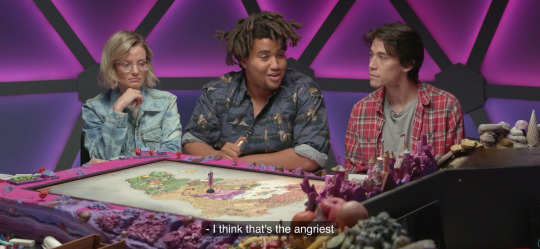
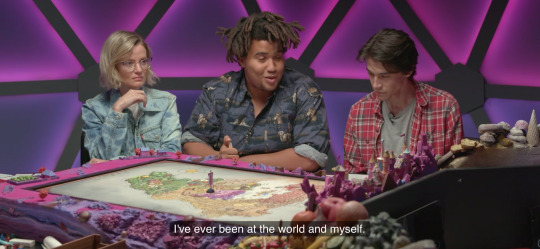



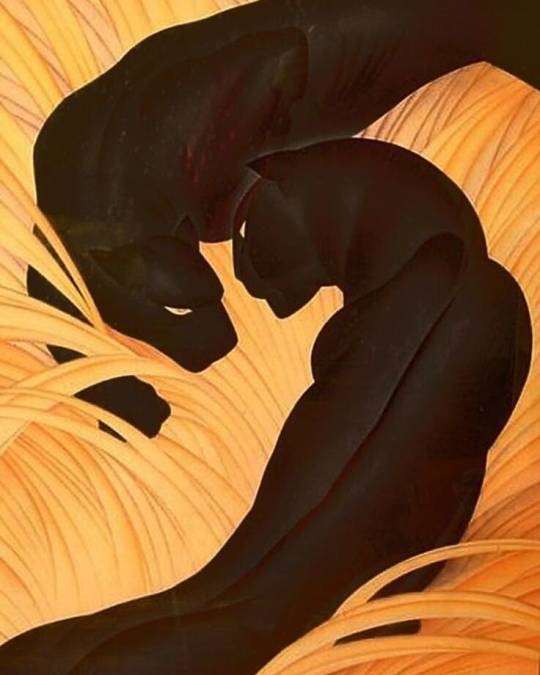

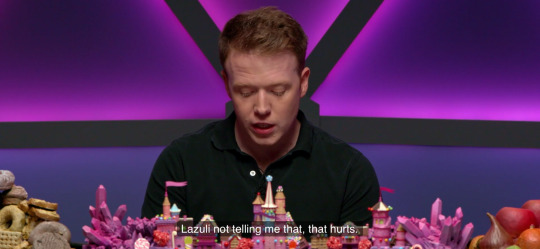
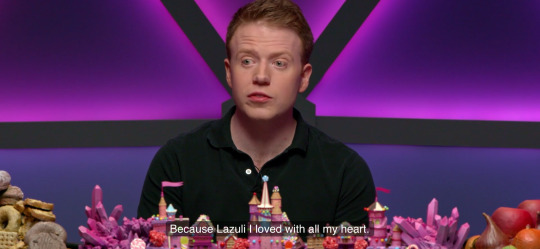
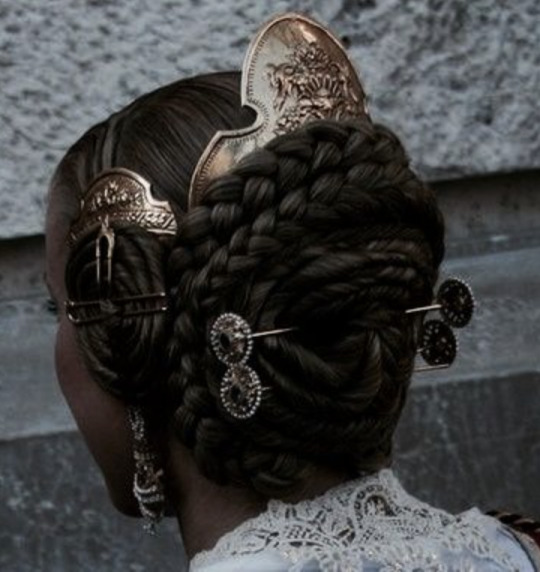
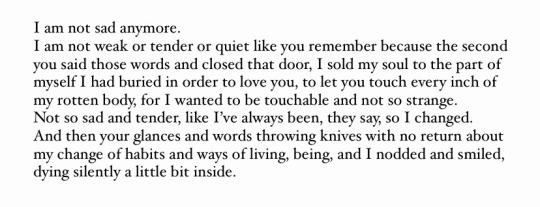
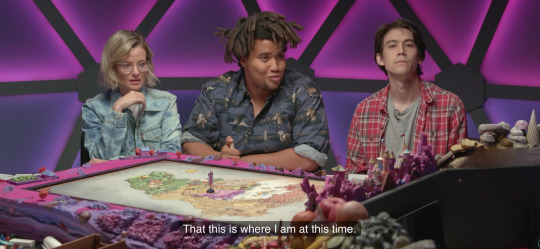
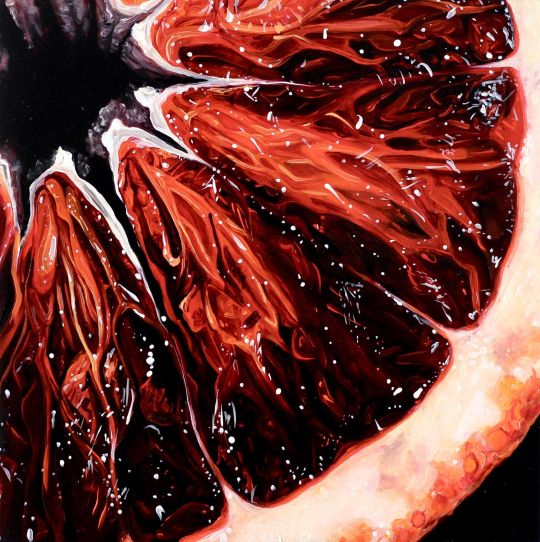






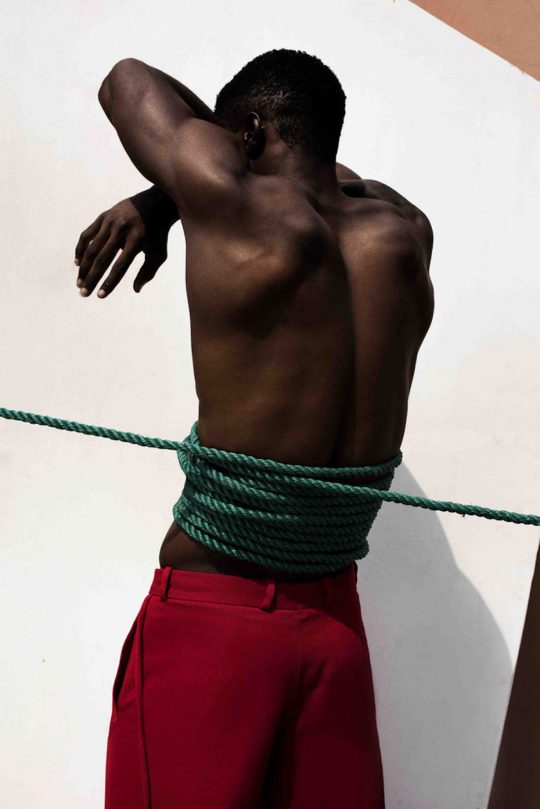



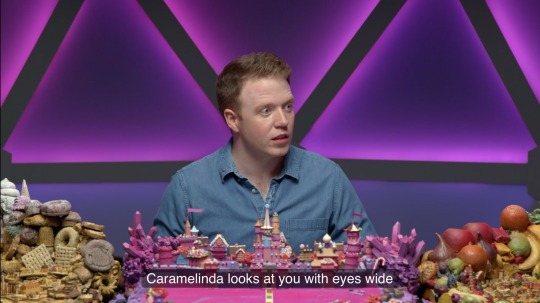



Queen Caramelinda and King Amethar of House Rocks
Louise Glück, Timor Mortis/Davis Blue/Anne Sexton, A Self-Portrait in Letters/Charlotte Eriksson, You're Doing Just Fine/Angela Faustina, BLOOD ORANGE XXIII/Isabel Allende, The House of The Spirits/Anne Carson, Plainwater/Derek Walcott the Antilles, Fragments of Epic Memory/James Baldwin, Giovanni's Room
#web weave#a crown of candy#this one gets to be in the main tags regardless of how haphazard it is because there is only 1 web weave for acoc on here ???#anyways#was rewatching acoc and had a lot of feelings about amethar and caramelinda and now i have a web for you
26 notes
·
View notes
Text

VERSES UPDATE: 2/?
HIGH / OLD REPUBLIC ERA : Shadows Reach.
what is it?
a verse taking where Obi-Wan is a Shadow during the High Republic or any time before
Obi-Wan Kenobi is an unknown figure to the public and an only slightly lesser unknown to the Jedi Order itself. His padawanship started very early at the age of eight and the majority of it was spent in the far reaches of the galaxy. Obi-Wan had a very traditional teacher who taught him Jedi have no place in the political heart of the government and was thusly raised in rural communities and undeveloped/developing planets. This background makes him very attuned to the Living Force and he is an expert working with plant life and establishing connections with various animals. During his senior padawan years, it became clear Obi-Wan was not at the best at interacting with strangers (or even his fellow Jedi) due to his isolated upbringing and instead of learning to socialize like a normal person, he uses his strong connection to the Living Force to pick up emotional cues and states of mind to cheat his way through conversations. It makes him a fairly good negotiator, but far from the best people-person the Jedi have to offer. Obi-Wan holds a strange position and he is something between a Jedi Shadow, a Finder, and a Wayseeker. His combination of reading people and being an unknown individual makes him a perfect candidate for infiltration and spy assignments. For the most part, he creates his own work and stops trouble whereever he finds it. The Jedi Order considers him to be a secret weapon and don't like pointing him at people lest they have to. He has several established aliases, but his two most notable are a bounty hunter and a member of one of Stewjon's noble families. His bounty hunter alias is Ginger and no one has ever seen his face. As Ginger was his first alias, he is the most flushed out and has the longest and most traceable background. Ginger was born out of a necessity to gain credibility among different groups and to handle more unsavory jobs that he doesn't want traced back to the Jedi. His second alias has no false name. He is Obi-Wan Kenobi, the second born son to the House of Kenobi on the planet Stewjon. Legally, he is married and has a spouse, but they rarely interact and each keep separate lives. Obi-Wan's spouse actually has a different spouse of their own (though the marriage is kept secret so no one thinks it's an affair) and Obi-Wan only returns to Stewjon when a job requires it. Obi-Wan still spends most of his time in the outer rim, dressed more like a spacer than a Jedi, and usually acts on his own. His lifestyle is not conducive to raising a padawan, but he still has a soft spot for younglings and would consider taking one if the time was right.
tldr: Wobi is a Jedi Super Spy who operates in the outer rim/wild space. He doesn't have a padawan because his work is often too dangerous and he has the galaxy's shadiest connections possible.
when will i be using it?
for high republic muses
or pre high republic muses
more notes:
he wears black and gold, it's very goth
a lot of people have no idea he's a jedi, including other jedi
he's kind of like a proto jon antilles
he likes joking about being married
5 notes
·
View notes
Text
I was tagged by @atlantidea! Thank you! <3
favorite color: black, grey, purple
last song: Is It Over Now? (Taylor's Version)
last movie: Barbie (2023)
currently watching: Lost S06, Loki S02, The Borgias S01
other stuff I watched this year: Uh, not too much because of the strike: The Great S03, House of the Dragon, the Mandalorian S03, The Last of Us
shows I dropped this year/didn't finish: The Borgias kinda, I don't see how I will finish at this pace, it's not exactly a "keeper", the politics is tiring to me
currently reading: Britney Spears's biography
currently listening to: the vault tracks of 1989 (Taylor's version)
currently working on: I still have to finish my picspams of The Great (S03) and Beef (Netflix)
current obsession: Taylor Swift, just take a look at my desktop theme
tagging: @spielbrgs @valarrtargaryen @kyoukotsu @bymine @thehiddenbaroness @wednesday-adams @bloodbuzz-ohio @margaritalaux-antille @yenneferschaos
6 notes
·
View notes